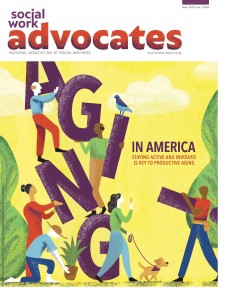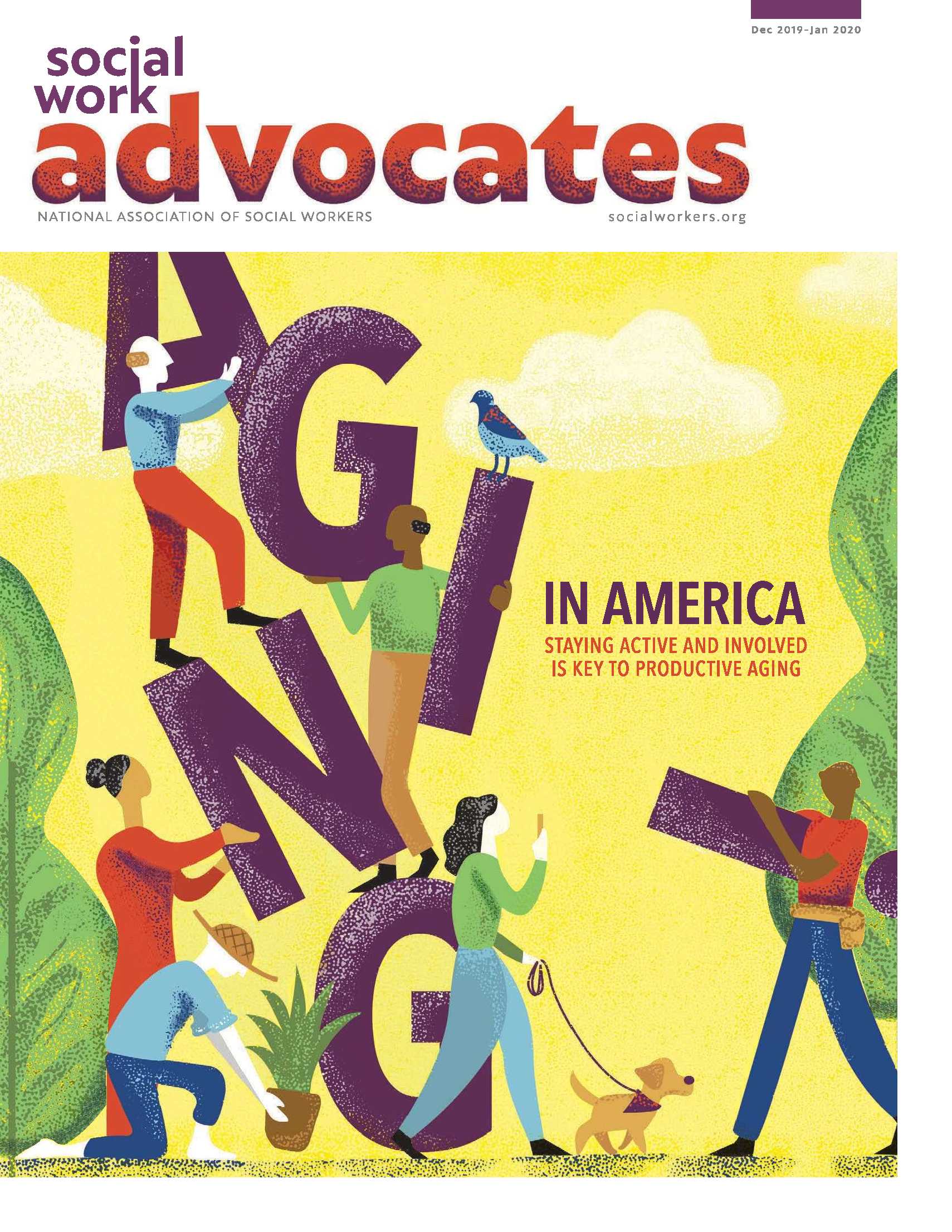 In case you missed it, here are some of the features in the December-January issue of Social Work Advocates.
In case you missed it, here are some of the features in the December-January issue of Social Work Advocates.
Top stories include:
Aging in America: Staying Active and Involved is Key to Productive Aging
Social work’s efforts to ensure that older Americans remain engaged can help those who are aging feel more vital and part of communities. This in turn can help reduce social isolation and change societal attitudes about aging.
Aging in America: Need for Caregivers Grows as Population Ages
Social worker Pamela Braun, who has spent her entire career in the field of aging, says many people don’t realize the amount of energy and care the aging population requires.
NASW Remains an Advocate for LGBTQ Rights
NASW President Kathryn Conley Wehrmann, PhD, LCSW, writes: “Our association fights for social justice on behalf of its members and the individuals, groups and communities they serve.”
NASW CEO Angelo McClain, PhD, LICSW, writes: “Authenticity is fundamental to communication, relationships, and real human connections. Authenticity begins with self-awareness: knowing your values, emotions, and competencies.”
More in the December 2019 – January 2020 digital edition:
• Aging in Place Programs Take Root
• The Millennial Shift: Preparing for the Future of Technology and Mental Health
• Older Clients: Getting Social Work Students on Board
• NASW Active in Immigration Policy
• Resource Promotes Engagement in Climate Change Awareness, Actions
• Webinar Offers Insight into Helping Couples Address Difficult Conversations
• Foundation Announces Latest Social Work Pioneer Inductees
• NASW-PA: Laughter Yoga Provides Health Benefits
• and more
To see the full digital edition, please visit this link.




